A brief history of the Dachshund
Dachshunds or Teckel’s as they are also known (I am not about to get into this debate here!) are hunting dogs by breeding and by nature. The name translates to Badger Hound in English and among other job’s Badger hunting is what they were originally used for.
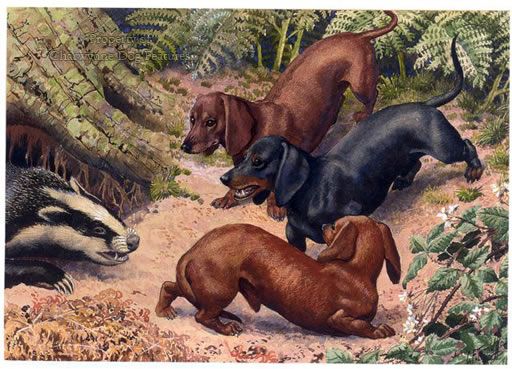
A member of The Hound Group with Kennel Clubs around the world, dachshunds, as hounds, are cited by the UK Kennel Club as dogs used for either hunting by scent or by sight. Dachshunds are unique in that they are a breed of dog very specifically constructed to be able to work efficiently both above and below ground. They are powerful diggers, or should be, with strong ’laid back’ shoulder conformation and tight powerful feet for excavation. They should also have great engines and true, straight flowing movement that supports a top line (back) that does not move in motion, it should remain level at all times in the trot… Even after many hours of work. All the selections made in the breeding of this little beastie over the years, the historic breed add ins and the type choices should have been to hone them to perfection for their job of work.

Source: http://www.dogsdogsdogs.co.uk
So, for the history of the WHD we really need to start with history of the dachshund as a whole.. As delving into the origins of our loveable, naughty, tenacious, fuzzy, prickly, spiky coated beasties finds them directly descending from their short coated brethren.
It’s all quite the tricky subject as there are many opinions on what happened when. Some have traced the history of short legged breeds of dog, resembling Dachshunds, right back to Egyptian times. Murals, pottery and even mummified dogs appearing in likeness to the dachshund, have been found in Egypt. It is theorised that these dogs, much like their modern ancestors were used for hunting small game. Other authorities have the dachshund originating in much more recent history.
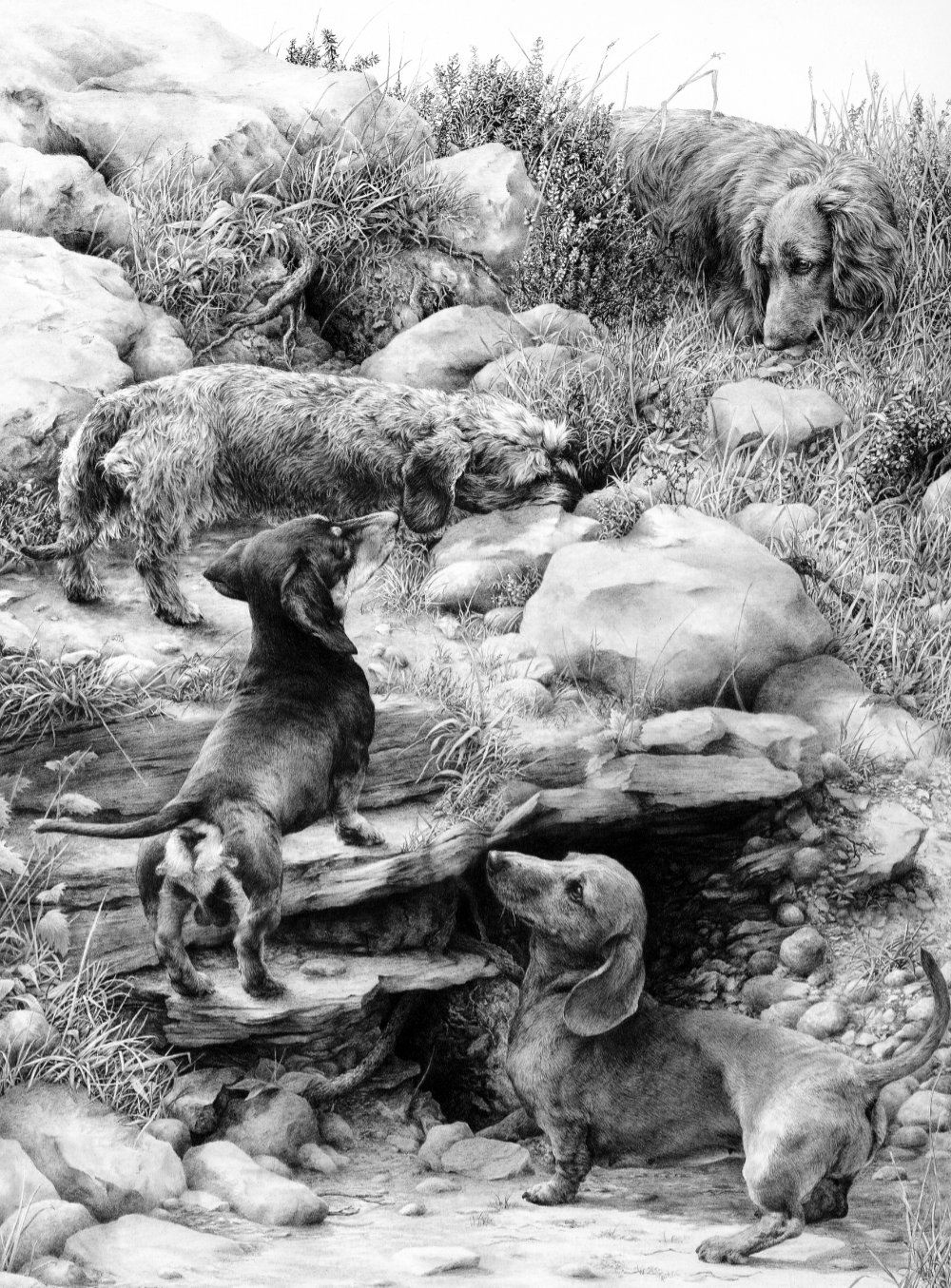
Source: The Warreners by Mike Sibley
Ideas and theories around the beginnings of the ‘modern’ dachshund date back as far as the 1700’s (although the American Kennel Club places it as far back as the 15th Century).
Most documented histories go back to Germany in the early 19th Century, where they were bred specifically for hunting rabbits, foxes, boar (hunting as a pack) tracking wounded deer and of course other blood trailing and working its namesake the Badger! So, this is the most generally accepted history of how the Dachshund first became ‘The Dachshund’ as we know it. Although they did look quite different over their long history (pardon the pun!)
Subsequently to the smooths and the longs, the Wire Haired variety of dachshund was first truly recognised as a separate type, also in Germany, in the latter part of the same century.
In his book from 1891 The American Book of the Dog, William Loeffer states that basically the only thing that can be agreed upon regarding the origin of the Dachshund is that the short haired variety started it all off and crossing other breeds into them eventually created the long and wire haired one’s we have today.
Pinschers, Dandies Dinmonts, Wire terriers and Wire Haired Pointers, among others, are all, in one account or another, suggested to have been used in the development of the WHD. Influencing the breed characteristics and developing the coat type. We still see genetic throwbacks to the contributing breeds occasionally and the relatively recent development of the breed means that litters of WHD puppies can be very diverse in coat type and body shape, especially if they are bred with very low in-breeding co-efficient’s and more continental/multicultural pedigrees. We can also get recessive smooths! But that’s for another day!
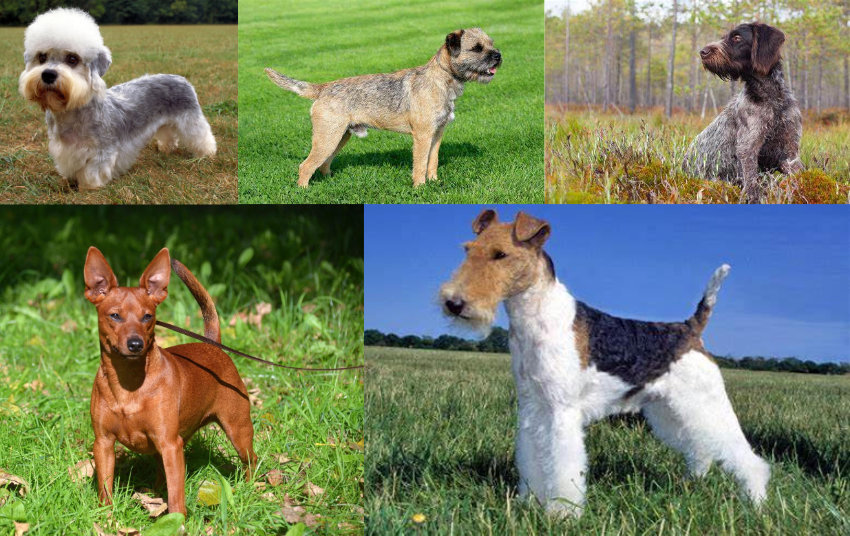
What must, imperatively, be taken from this history, is that these little dogs are WORKING dogs and HUNTERS. They were specifically bred to do a job of work and in many countries they are still very much used for all their original purposes. In the UK as well, there is an active hunting scene where Wire Haired Dachshunds are utilised for their innate skills and where those skills are both encouraged and honed to perfection. Increasingly their talented and sensitive noses are also getting involved with scent work, man-trailing and competition tracking.
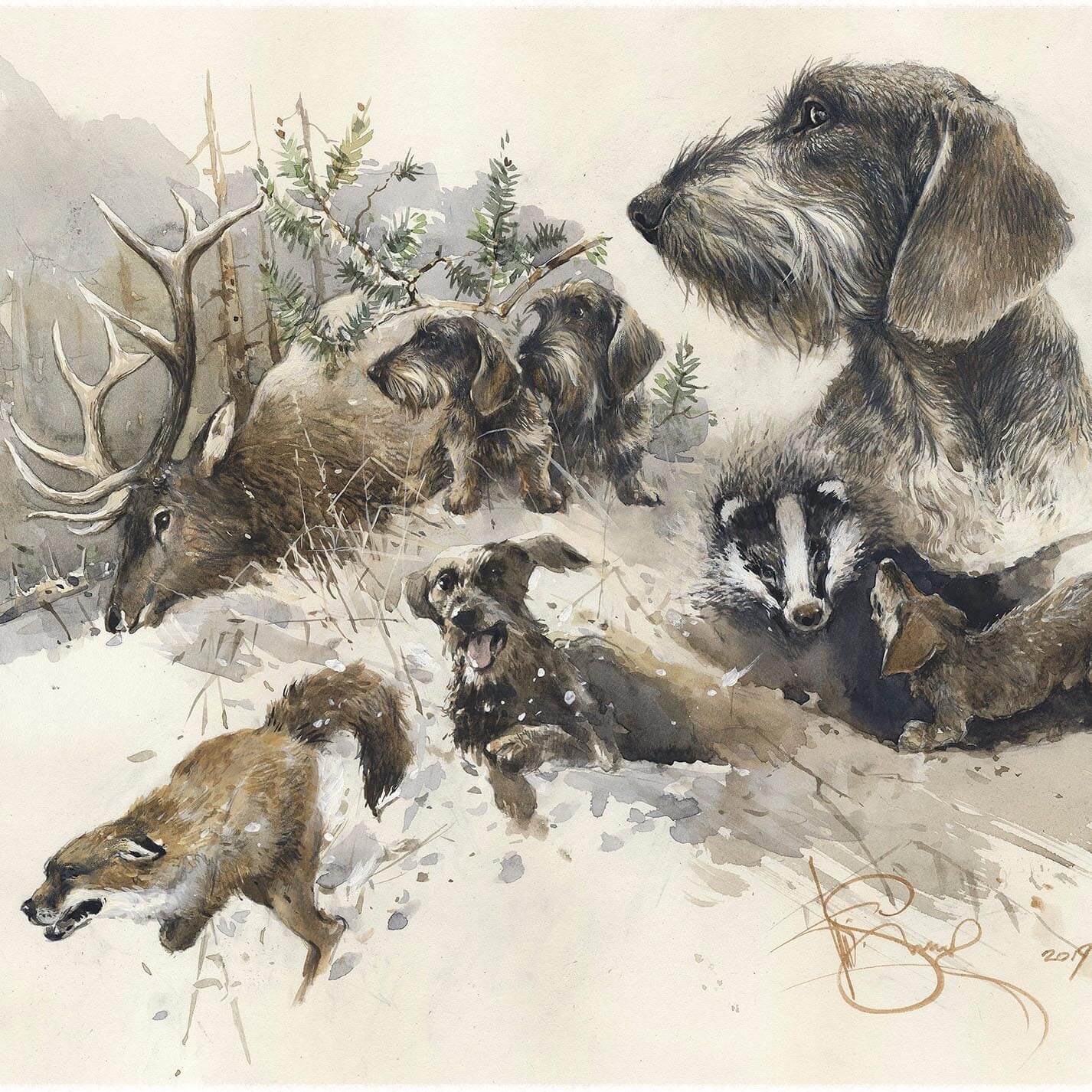
Source: Wirehaired Dachshund. Hunting
By no means is every sausage roaming the land ‘born to hunt’ but a lot of them truly believe themselves to be murder machines and have an incredible and overwhelming prey drive.
This does not mean they cannot be wonderful, loving and gentle pets. Great family dogs. But no prospective owner should overlook what they were developed to do and all should expect a little bit of the tenacious hunter to be in every one. Some far more than others…
As a breeder I am often asked to provide a puppy with ‘less inclination to work’ but the breeding in their formation, in history, the bloodlines and the nature of genetics means there are promises I cannot make. A dachshund that doesn’t work is an impossible promise.
In terms of documented and agreed upon facts in history… If you have a delve about on the internet and get your nose in some books you will discover some of the same things as me…
The dachshund (Smooth haired model) became popular in the UK around 1840 due to it being a loved breed by the Royal Family.
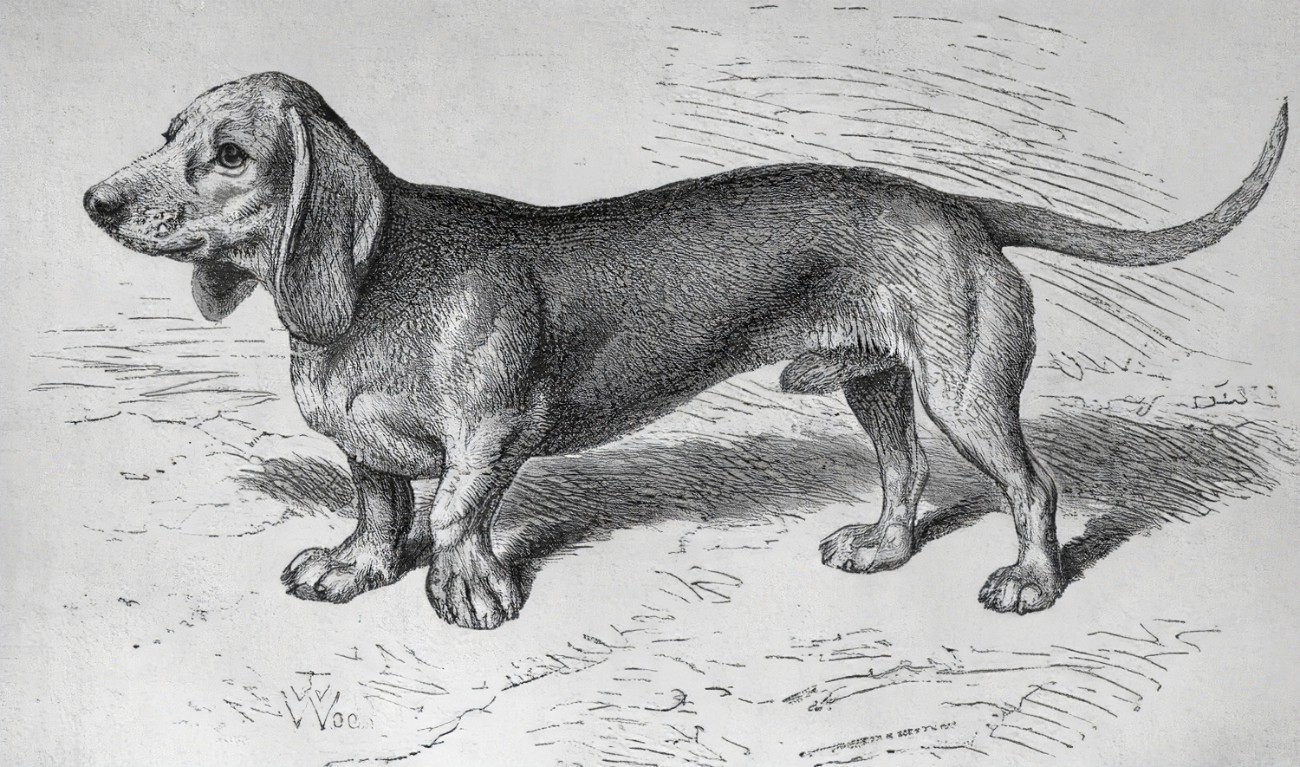
It was introduced to America later in the 1800’s and its popularity there peaked around the 1930’s and 1940’s.
The UK Dachshund Club was founded in 1881 and as such is one of the first breed clubs for any breed. It was only for Smooth haired… as there were no other types in the UK at the time. The Dachshund Club is still going strong and there are now many more Dachshund breed clubs in the UK. Including, of course, The Wire Haired Dachshund Club which was founded in 1927.
In 1939 JF Sayer published his book ‘Standard Points Of The Dachshund’ and ever since it has been considered a bible for breeders and judges alike. I highly recommend a read as a prospective owner. As a historical landmark for education on type, and characteristics, for all dachshund breeds. Sayer has been the backbone of the breed standard for Dachshunds and remains the definitive guide. More about this and the breed standard here : “Not long and not low” – please read the Breed Standard – The Dachshund Breed Council UK
Dashsunds Fame & Royalty
In England, both Queen Victoria and subsequently Queen Elizabeth II were very partial to a Dachshund. Queen Victoria famously stated “Nothing will turn a man’s home into a castle more quickly and effectively than a Dachshund."
Queen Elizabeth famously had also her ‘Dorgis’ having cross bred her Corgis with a dachshund reputedly owned by her sister.
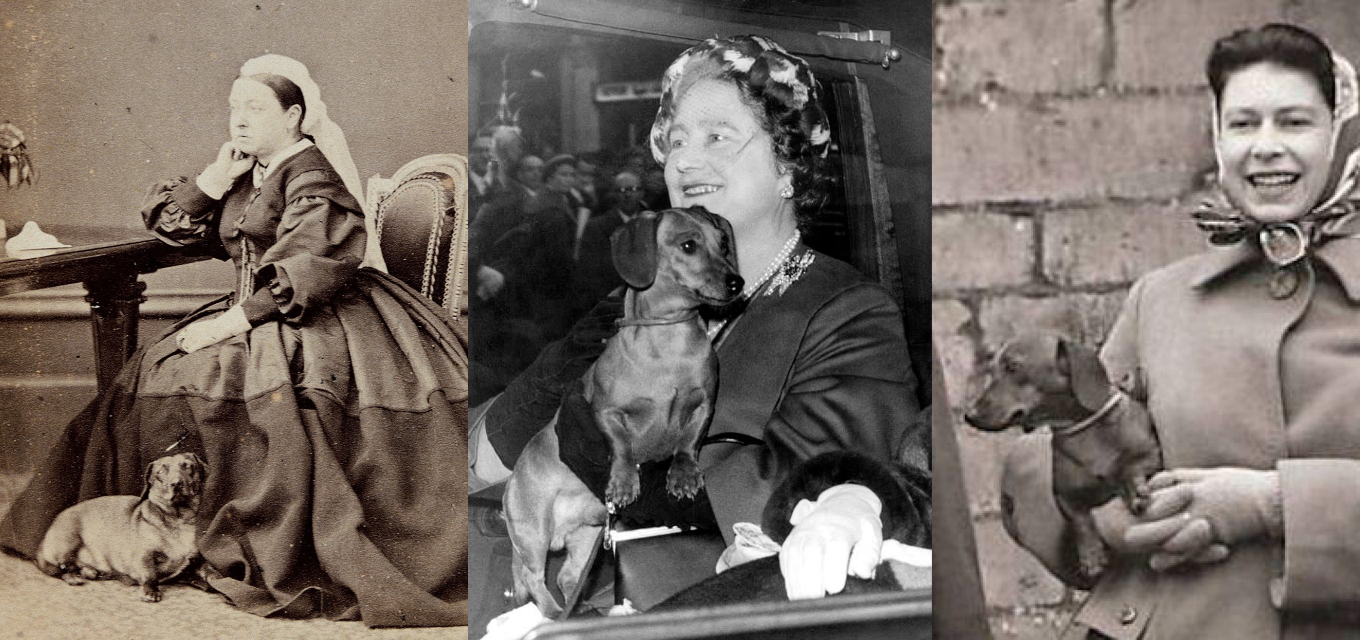
The breed has also graced other royal courts and has been the dog of choice for many famous faces and celebrities over the years. Strangely there are not that many Wire Haired Dachshunds gracing the arms of the famous… most are smooths and longs, and most are also minis! Some of the most famous Wires are those of the German war… !
There a multitude of lists and information pages on the internet about famous people and their Dachshund companions. Hampdach Dachshunds have taken the time to compile a detailed selection using multiple other sources of the internet. Its quite interesting.
Dachsunds in the War

he dachshund got a pretty rough ride in WW1 (and WW2) - especially in the UK and America, where its popularity crashed. As a breed of dog originating from/ being a symbol of Germany as well as being popular with some of its tyrannical top bodies… it was used symbolically and there are even reports of Dachsunds being stoned in the streets…
This didn’t really have much to do with the wire breed - most of what we see regarding the war is related to the smooth haired as they were by far the most popular and available at the time. I suppose the early Wire Haired models didn’t really ’look like sausage dogs’ as such. Or not in the same way. Even nowadays they are often not recognised!
Up until as late as 1914 the London press was still favourable toward the dachshund breed and they were still much loved in the UK and America…but then… It all went a bit wrong. In short, the dachshund was used quite profusely in anti-German propaganda, reputedly often suffered actual physical violence and their numbers depleted significantly along with their popularity. The Kaiser had a great love for the breed, having his own 2 dachshunds which undoubtedly did nothing to bolster their popularity during this dreadful time in human history.
During the first world war the dachshund was used as a messenger dog in the trenches. Due to their size and skill set they were great at the job. But sadly, many were killed in action. In WW2 they also served, with their excellent noses they were used to sniff out land mines and other explosives.

The Mary Evan picture library blog gives a great account of the journey of the Dachshund through the WW1 years and its well worth a look. I have borrowed some of the great pictures from the blog here.
There are many other resources to expand your knowledge on this subject, with lots of people gathering information and accounts. It’s quite an interesting read through, but a lot is repetitive. Thankfully in between the 2 wars and after the conclusion of WW2 dachshunds regained their popularity and although numbers have fluctuated over the years they remain a firm favourite.
Contact us
Please call me today on 07496 106 745 or use our contact form if you are interested in finding out more about us, our dogs and potential litters.
I love to speak to people and we welcome emails and messages. Visitors are welcome by arrangement.